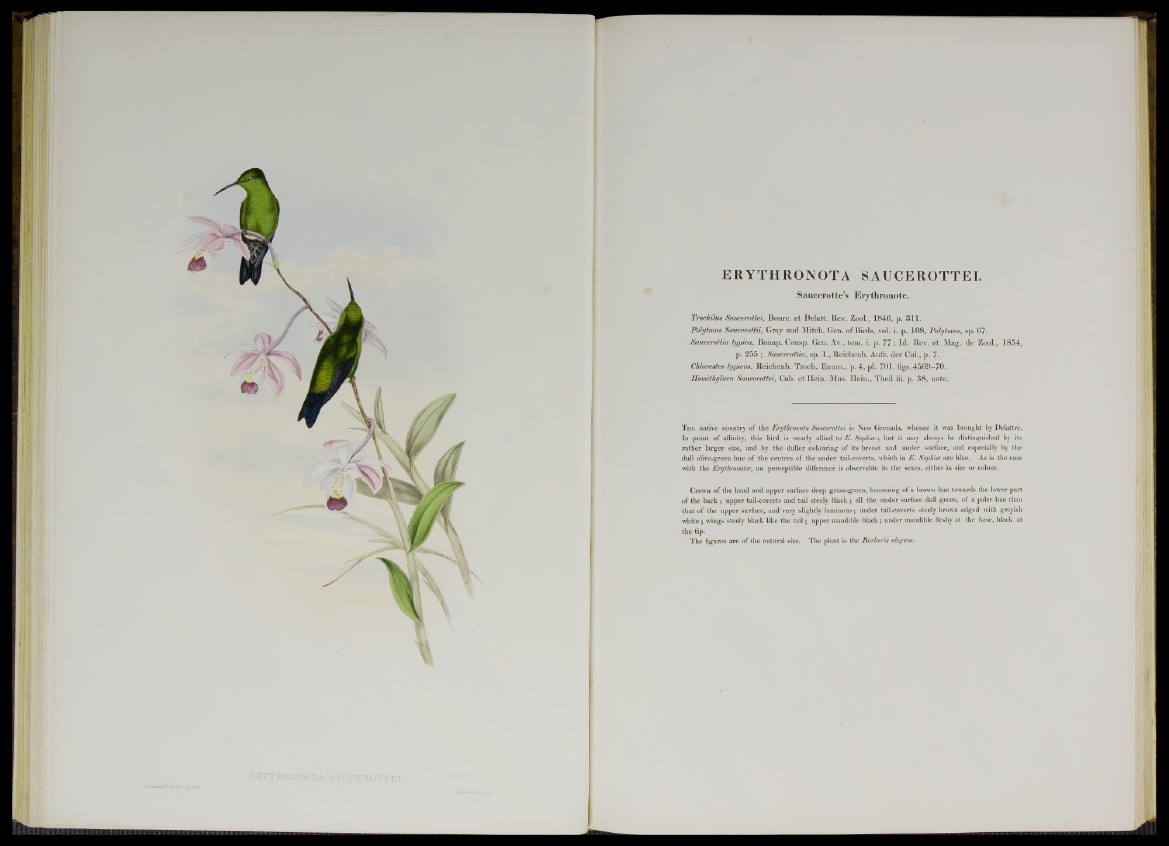
ERYTHRONOTA SAUCEROTTEI.
Saucerotte’s Erythronote.
Trochilm Saucerottei, Bourc. e t Delatt. Rev. Zool., 1846, p. 311.
Polytmus Saucerottii, Gray and Mitch. Gen. o f Birds, vol. i. p. 108, Polytmus, sp. 67.
Saucerottia typica, Bonap. Consp. Gen. Av., tom. i. p. 7 7 ; Id . Rev. e t Mag. de Zool., 1854,
p . 255 ; Saucerottia, sp. 1., Reichenb. Aufz. der Col., p. 7.
Chlore8tes typicus, Reichenb. Troch. Enum., p. 4 , pi. 701. figs. 4569—70.
Hemithylaca Saucerottei, Cab. e t H ein. Mus. Hein., Theil iii. p. 38, note.
T h e native country of the Erythronota Saucerottei is New Grenada, whence it was brought by Delattre.
In point of affinity, this bird is nearly allied to E. Sophia; ; but it may always be distinguished by its
rather larger size, and by the duller colouring of its breast and under surface, and especially by the
dull olive-green hue of the centres of the under tail-coverts, which in E. Sophia? are blue. As is the case
with the Erythronotce, no perceptible difference is observable in the sexes, either in size or colour.
Crown of the head and upper surface deep grass-green, becoming of a brown hue towards the lower part
of the back ; upper tail-coverts and tail steely black ; all the under surface dull green, of a paler hue than
that of the upper surface, and very slightly luminous; under tail-coverts steely brown edged with greyish
white ; wings steely black like the tail; upper mandible black; under mandible fleshy at the base, black at
the tip.
The figures are of the natural size. The plant is the Barkeria elegans.